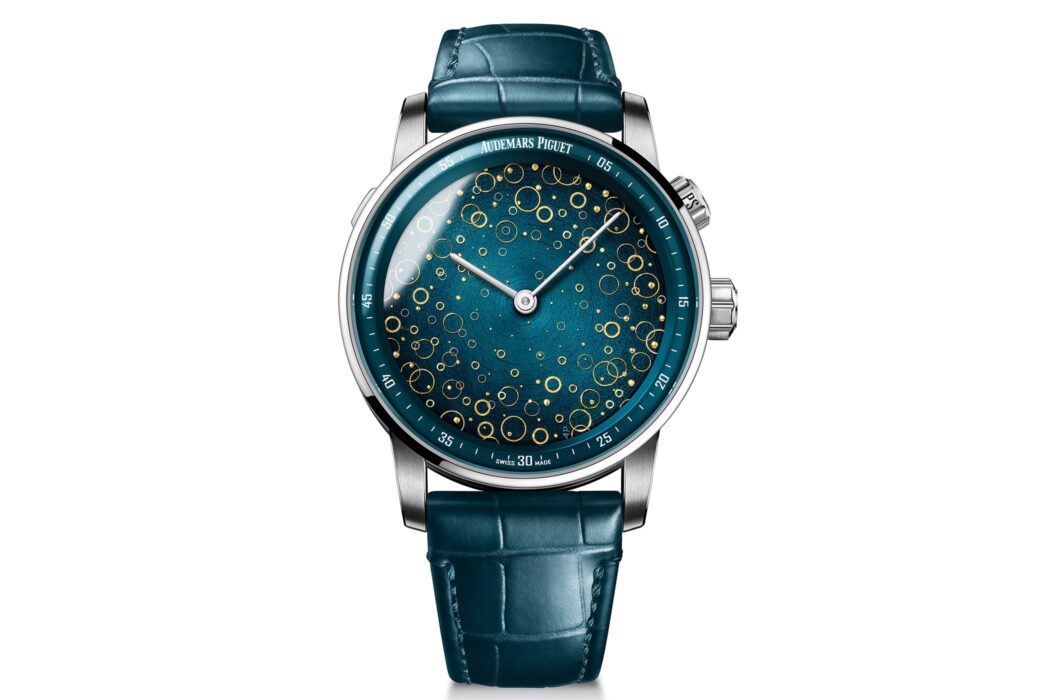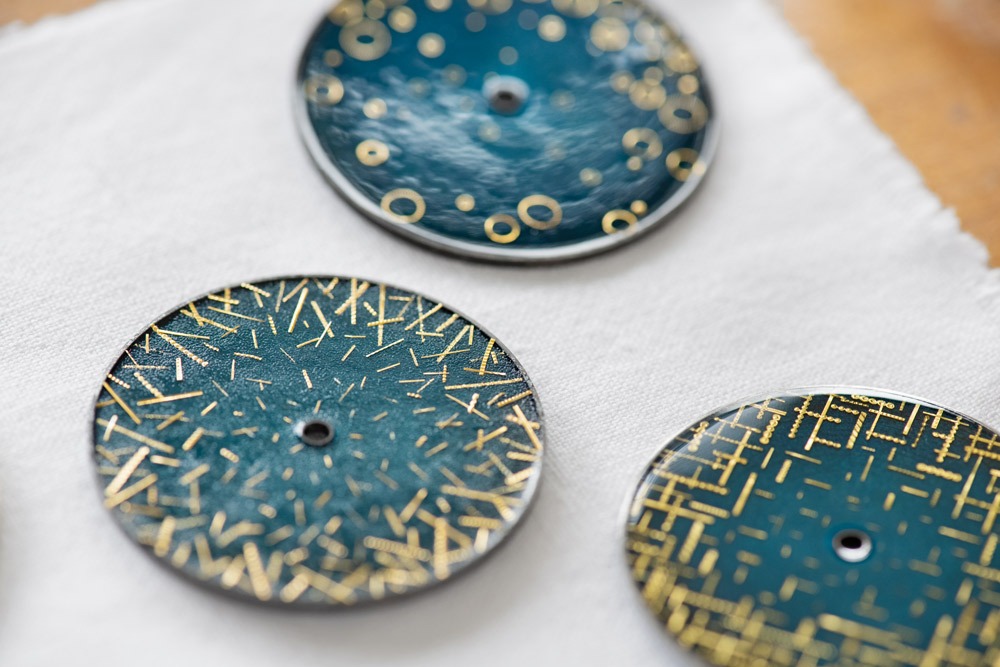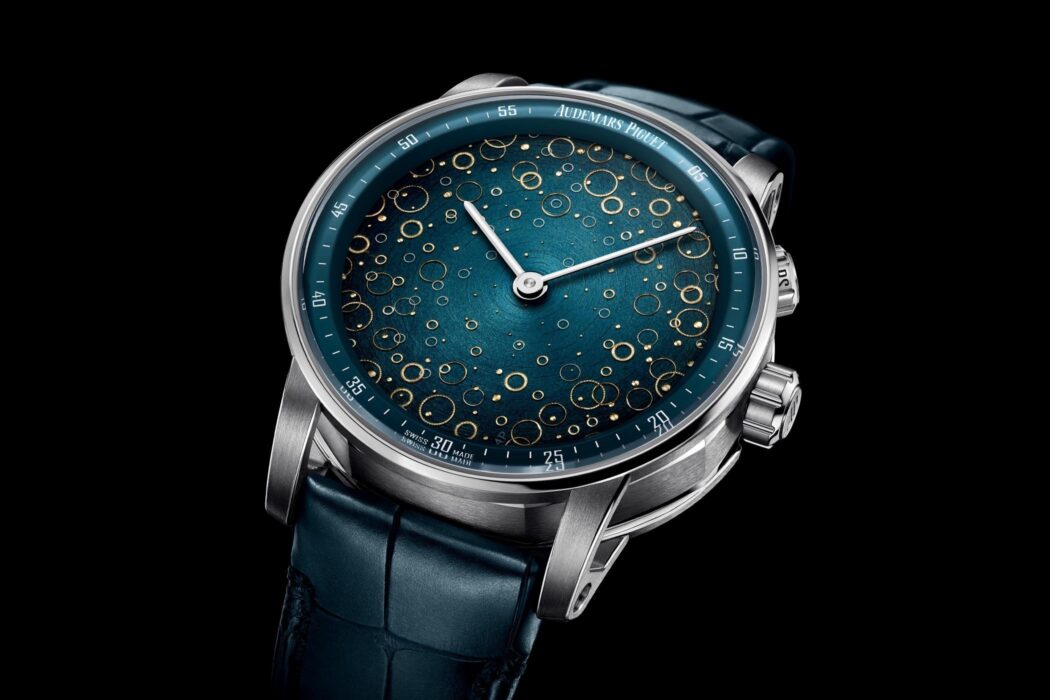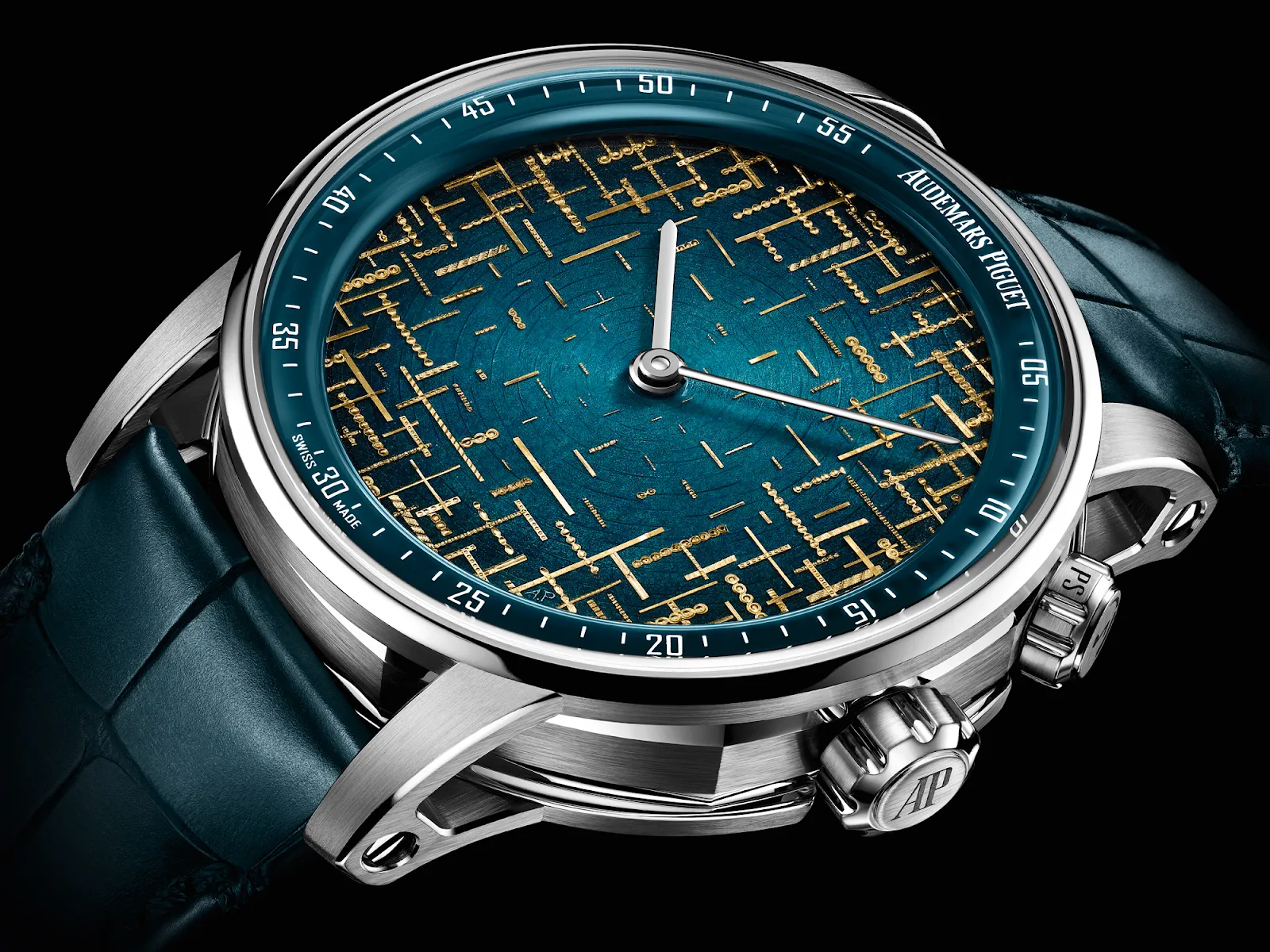In keeping with a more relaxed era, elite traditional movements have a sporty aesthetic.
There is one fun fact that you might not know about Audemars Piguet: more than half of the 1,625 watches that the company produced between 1882 and 1892 had chiming mechanisms, of which 28 were grand sonneries. Audemars Piguet made its first minute repeater wristwatch (29.3 mm) in collaboration with Louis Brandt & Frère in 1892, with two hammers that could be set at a distance in order to strike the hour, quarter, and minute when asked.
There is no doubt that Audemars Piguet is experienced when it comes to chiming watches. There is no doubt that the Code 11.59, by Audemars Piguet Grande Sonnerie Supersonnerie, is the latest in the series of repeaters that possess an accumulating collection of knowledge that is unique to that brand.

As part of the chiming function of Audemars Piguet, the gongs are not attached to the mainplate, but instead are anchored to a component that serves as a soundboard to enhance the sound transmission as a result of its patented Supersonnerie technology, introduced in 2015. It works very much like an echo chamber, which amplify the chime, making it sound like a pocket watch. As a result of the large case, the chime is able to resonate, creating the sound quality that is similar to a pocket watch in terms of acoustic performance.
A carillon has been added by Audemars Piguet to this collection, which means there are three gongs and hammers instead of the traditional two gongs, so the quarter hour will be struck by three notes in succession rather than two. Despite its traditional watchmaking techniques, this watch is presented in a deliberately modern package that is the epitome of watchmaking at its best.

With their combination of traditional and contemporary elements, these watches are constructed of 18-karat pink, yellow, or white gold cases paired with a ceramic case side and black opaline inner bezel in a fusion of traditional and contemporary elements. It is made up of an openworked movement, a plate, hands, and markers which are colored in the same hue as the gold case. As far as the Grand Sonnerie Supersonnerie Carillon collection is concerned, it is the first time black ceramic has been incorporated into the gold case, and it has been the first time yellow has been used in the Code 11.59.
It is also the first watch to feature a sapphire dial that allows a full view of the movement that has just been freshly finished. As part of the dial’s modifications, the bridges at four and six o’clock have been opened up, the railway track has been removed, and on the upper components, a satin finish has been applied instead of a circular graining decoration. This highly complex movement has a depth that can be seen from the plate below. The perlage visible on this plate gives us an idea of its complexity.

This Audemars Piguet Grande Sonnerie Supersonnerie case measures 41 millimeters in diameter and is accompanied by a black rubber-coated strap that has matching gold stitching, calfskin linings, and a gold clasp with Audemars Piguet. As each of the three versions of the watch is unique, the price for each one is approximately Swiss Francs 715 (approximately $770,000).



